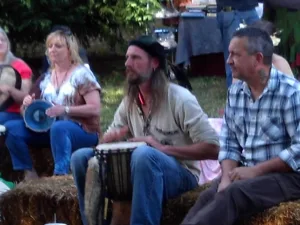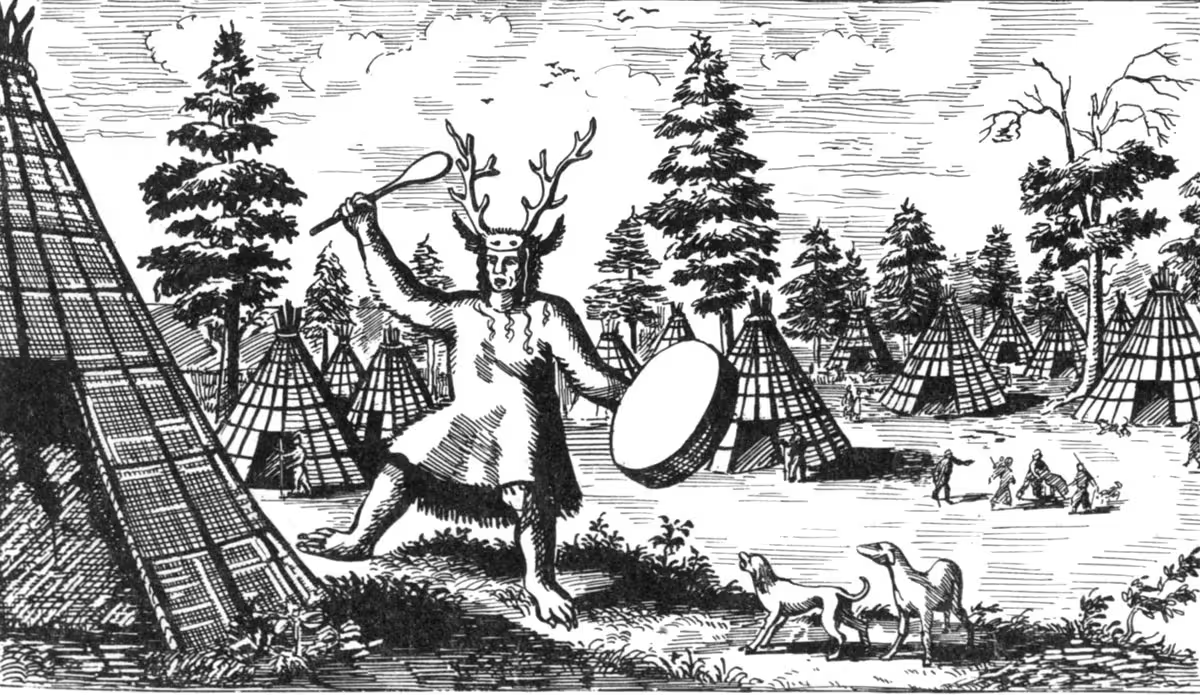Shamanism is known throughout most indigenous cultures of the world. The word shaman itself comes from the Evenk language (Tungusic) of North Asia, and originally meant, “one who knows,” so a shaman is a wise person. The word itself is North Asian in origin, but most primal cultures had some sort of concept of the shaman, even though they might not have been known by that name. In ancient Scotland, they were called “taibhsear,” or “vision seekers.” In Lakota, they were called “Wicasa Wakan,” or “holy men.” In Hawaii, the word is “Kupuna,” meaning “Elder” or “Ancestor.”
There are nuances of meaning from culture to culture. Some cultures get offended when people use an Evenk word to describe their own shamanic traditions. Still, the word “shaman” has become ingrained in common usage to refer to anyone from any culture who practices a spiritual path with the characteristics listed below:

- Out-of-Body experiences – These experiences are sometimes called “soul journeys” or “magic flights.” In such an experience, the practitioner’s soul leaves the body and travels to distant places and/or times to gather information for healing and other purposes. Most cultures that practice shamanism also have a belief that the shaman can visit the Otherworld; the realm of the dead that is the dwelling place of the departed Ancestors, and sometimes of the gods as well.
- Chanting, drumming, and dancing – These rhythmic and repetitive sounds are specifically designed not for entertainment, but to induce a trance-like state that can then be used to journey to the Otherworld.
- A codified system of training – This training system usually takes the form of an apprenticeship in which an experienced shaman trains a student in specific tools and techniques usually geared towards producing visions and otherworldly journeys.
- An initiatory crisis involving a death and rebirth experience – This is usually a ritualized event in which the student or apprentice “dies” to the old way of life and is reborn to a new way of being in the world. It usually also includes a new way of seeing the world.
- Gifts of divination, diagnosis, and/or prophecy – Shamans are able to see the future, diagnose sicknesses, and make prophecies. Divination and prophecy usually take the shape of journeying to the Otherworld and bringing back information, or consulting with the gods about the fate of a person or situation. The diagnostic aspect can incorporate basic medical skills but also moves beyond the physical to seeking diagnostic information within the spiritual realm.
- Healing rites and rituals involving spiritual matters – Shamans from most cultures journey to the Otherworld to recover lost souls who may have left their bodies behind during a sickness. They may also recover spirits trapped in various versions of Limbo.
- A belief that diseases are caused wholly or in part by spirits, witches, sorcerers, or curses – A modern take on this belief is the idea of doing energy work in order to prevent the influence of negative energies and to promote the influence of positive energies.
- A belief in and interaction with totem animals and spirits – Most shamans have at least one totem animal, and many have more than one. Totem animals assist the shaman in spirit journeys, and in completing magical tasks. They may also watch over the shaman and people under her protection.
- An ability to shape-shift into different animals – This shape-shifting doesn’t necessarily imply a literal transformation. It could be creative costuming and mimicry. Shamans from many cultures wear feathered cloaks because birds have the ability to shift between the worlds of earth and sky. By impersonating birds, shamans gain their powers and abilities. So by dancing like a bird, the shaman gains the power to travel between the worlds.
- Ability to cast and cure curses – Shamans have the ability to see things others cannot. This means that they can recognize the influence of negative energies in the form of curses. They also have the ability to hurl curses at others using their own spirit allies.
- Ability to perform hunting magic – Shamans have the ability to predict the movements of food animals, to bring them closer to the tribe, and perform rites and blessings of thanksgiving for a successful hunt.
Shamanism: Becoming an Ecospiritual Shaman
Looking over the list of the characteristics of the shaman outlined above, a modern spiritual seeker can readily identify with some of those characteristics, while others might be more difficult to put into a modern context. It’s easy to engage in ritual chanting, drumming, and dancing around a campfire, and to have a ritual death and rebirth experience (in a metaphorical sense, that is). It may be more difficult to cast curses or to engage in hunting magic in a contemporary urban environment.
What does it mean to be a shaman in modern times? How do we walk the shaman in an industrialized society? A redefining of the role of the shaman is necessary. The way to begin this redefinition is to first answer the call.
In the Departure phase of our journey to ecospirituality, we are leaving the familiar world to partake in a journey of self-awareness. We are learning a new way of being in the world and challenging our old assumptions and perceptions about the way the world works. We are allowing ourselves to awaken to a world of wider possibilities by being willing to do things in a different way. It may mean challenging the old dogmas by which we have lived our lives in the past. It may mean allowing Coyote to devour our sacred cows so that we can come to trust our own inner voices. It may mean learning to trust ourselves and our own supernatural aid enough to be willing to take that first step into a new reality.
The choices you make create that reality for you.
The Call to Adventure is the catalyst that sets the Hero’s Journey in motion. It could be an inner need to change one’s circumstances, or it could be an external event that triggers the journey. For Buddha, it was the inner desire to seek enlightenment. For Luke Skywalker, the Empire forced his hand. In either case, the hero recognizes that something fundamental has changed, and he/she can never go back to the way things were.
You may have received such a Call to Adventure. It is up to you how you choose to answer that call. In the coming weeks, we’ll be talking about how.

